
Top Crypto Podcasts in 2024 - Token Metrics Moon Awards

Welcome to the Token Metrics Moon Awards, a prestigious accolade in the cryptocurrency industry, honoring platforms, projects, and initiatives that have significantly impacted the industry.
Today, we are thrilled to introduce a new category of Moon Awards - the top crypto podcast of 2024. These podcasts have garnered substantial support from crypto enthusiasts and investors in our survey.
Selection Process of the Top Crypto Podcasts
At Token Metrics, we prioritize our audience and consider them our most valuable asset. Our community-driven approach ensures the awards reflect crypto enthusiasts' real-world opinions and experiences.
Through the Moon Awards, Token Metrics amplifies the voice of its community, providing a transparent and user-centric evaluation of platforms shaping the industry's progress.
In collaboration with our community members and users' votes, we have compiled a comprehensive list of the top crypto podcasts in 2024 based on survey input and votes.
List of Top Crypto Podcasts in 2024
These podcasts have been meticulously selected based on content quality, host expertise, guest lineup, production value, and community votes. We will thoroughly examine each podcast, spotlighting its unique features and why they deserve your attention.
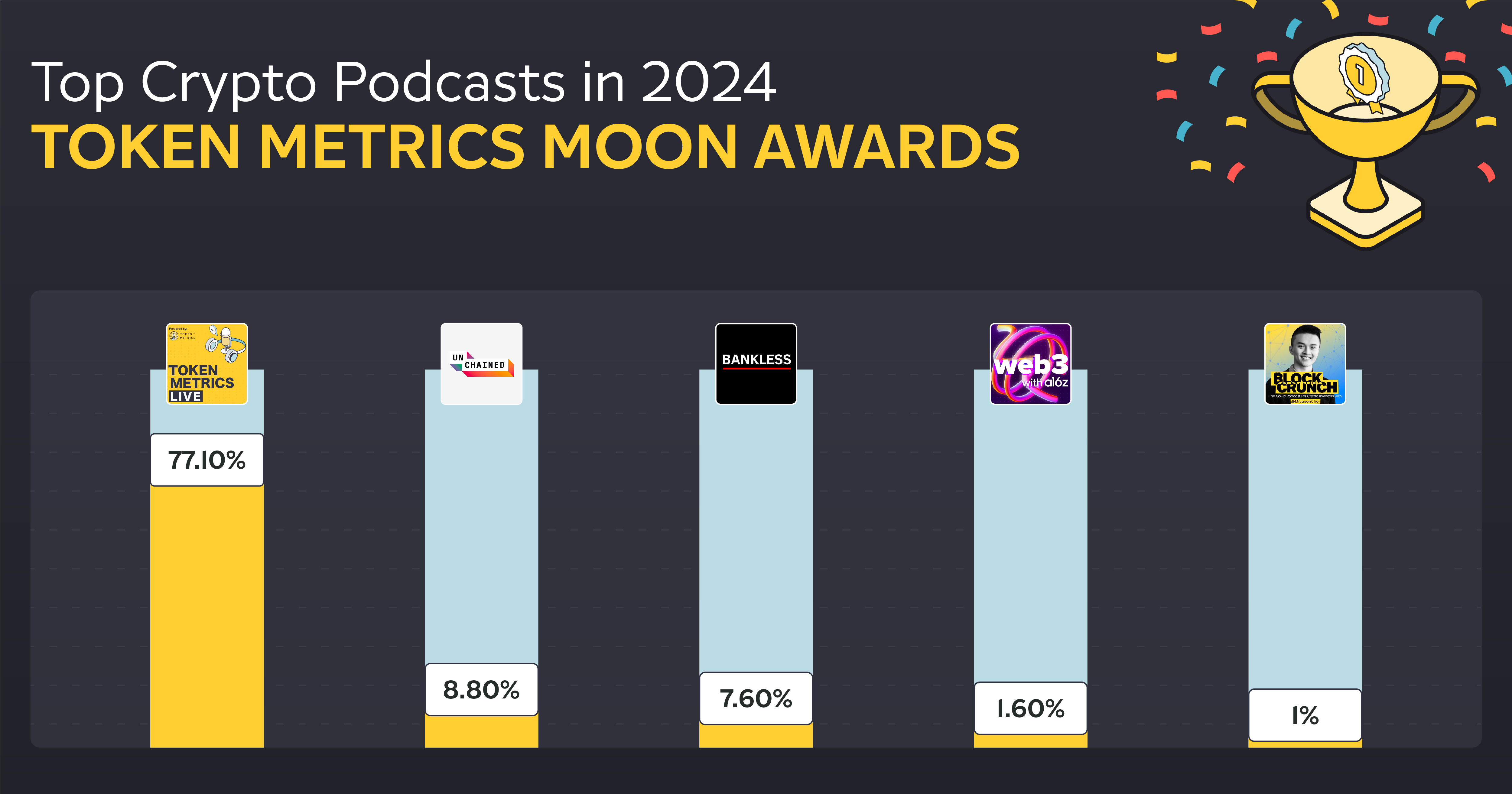
Token Metrics Podcast
In the Moon Awards survey, Token Metrics Podcast secured the top position with 77.10% of the total votes.
The Token Metrics Podcast is a treasure trove of valuable information for crypto investors. This podcast is hosted by Ian Balina, Founder of Token Metrics, and provides in-depth analysis, insights, and interviews with industry experts. Whether you're a seasoned investor or starting out, the Token Metrics Podcast offers something for everyone.
What Sets the Token Metrics Podcast Apart?
The Token Metrics Podcast stands out for its data-driven approach to crypto investing. The team at Token Metrics leverages artificial intelligence and machine learning algorithms to analyze and evaluate cryptocurrencies.
This data-driven approach helps investors make informed decisions based on real-time market data and insights.
Key Features of the Token Metrics Podcast
- Market Analysis: The Token Metrics Podcast provides regular market updates and analysis, helping listeners stay informed about the latest trends and developments in the crypto market.
- Project Reviews: The podcast features in-depth reviews of various crypto projects, giving listeners valuable insights into their potential and investment opportunities.
- Investment Strategies: The team at Token Metrics shares their investment strategies and tips, helping listeners navigate the complex world of crypto investing.
- Guest Interviews: The podcast invites industry experts and thought leaders as guests, offering listeners the opportunity to learn from the best in the field.
How to Access the Token Metrics Podcast?
The Token Metrics Podcast is available on all major podcast platforms, including Apple, Spotify, and Google Podcasts. Simply search for "Token Metrics Podcast" and start listening to gain valuable insights into crypto investing.
Unchained Podcast
In the Moon Awards survey, Unchained Podcast secured the 2nd position with 8.80% of the total votes.
The Unchained Podcast, hosted by Laura Shin, is a must-listen for anyone interested in blockchain and cryptocurrencies. With a focus on industry trends, innovations, and thought-provoking discussions, this podcast offers a wealth of knowledge for beginners and seasoned crypto enthusiasts.
What Makes the Unchained Podcast Unique?
The Unchained Podcast stands out for its journalistic approach and in-depth interviews. An experienced journalist, Laura Shin asks thought-provoking questions and uncovers insights from industry leaders and experts. The podcast provides a platform for open and honest discussions about the latest developments in the crypto space.
Key Features of the Unchained Podcast
- Expert Interviews: Laura Shin invites a wide range of guests, including blockchain founders, investors, regulators, and academics. These interviews provide listeners with diverse perspectives and insights into the world of blockchain and cryptocurrencies.
- Industry Trends: The podcast covers the latest trends and innovations in the crypto industry, including topics such as DeFi, NFTs, and regulatory developments. Listeners can stay up-to-date with the rapidly evolving world of blockchain technology.
- Educational Content: The Unchained Podcast provides educational content for beginners, helping them understand the basics of blockchain and cryptocurrencies. Laura Shin breaks down complex topics into easily digestible information.
- Thought Leadership: The podcast features thought leaders who share their visions for the future of blockchain and cryptocurrencies. Listeners can gain valuable insights into the potential impact of these technologies on various industries.
How to Listen to the Unchained Podcast?
The Unchained Podcast is available on popular podcast platforms like Apple, Spotify, and Google. Simply search for "Unchained Podcast" and explore the fascinating world of blockchain and cryptocurrencies.
Bankless Podcast
In the Moon Awards survey, Bankless Podcast secured the 3rd position with 7.60% of the total votes.
If you're interested in decentralized finance (DeFi) and want to stay on top of the latest developments, the Bankless Podcast is a must-listen.
Hosted by David Hoffman and Ryan Adams, this podcast explores the world of DeFi, providing valuable insights for beginners and experienced investors.
What Makes the Bankless Podcast Stand Out?
The Bankless Podcast stands out for its focus on the DeFi revolution. David and Ryan dive deep into the world of decentralized finance, exploring concepts such as yield farming, liquidity mining, and governance. The podcast comprehensively explains how DeFi is reshaping the financial landscape.
Key Features of the Bankless Podcast
- DeFi Explained: The Bankless Podcast provides educational content to help listeners understand the intricacies of decentralized finance. David and Ryan break down complex concepts and explain them in a way that is accessible to everyone.
- Interviews with Experts: The podcast invites industry experts and thought leaders as guests, allowing listeners to learn from the best in the DeFi space. These interviews provide valuable insights and perspectives on the latest trends and developments.
- Investment Strategies: David and Ryan share their investment strategies and tips for navigating the world of DeFi. Whether you're a beginner or an experienced investor, the podcast offers valuable advice to help you make informed decisions.
- Community Building: The Bankless Podcast fosters a strong community of like-minded individuals passionate about DeFi. Listeners can connect with others who share their interests and exchange ideas and knowledge.
How to Tune into the Bankless Podcast?
The Bankless Podcast is available on popular platforms like Apple, Spotify, and Google. Simply search for "Bankless Podcast" and start exploring the world of decentralized finance.
Web3 with a16z Podcast
In the Moon Awards survey, Web3 with a16z Podcast secured the 4th position with 1.60% of the total votes.
The Web3 with a16z Podcast, hosted by the team at Andreessen Horowitz, delves into the intersection of technology, culture, and decentralized networks.
With a focus on the future of the web and the impact of blockchain technology, this podcast offers valuable insights for anyone interested in the evolving digital landscape.
What Makes the Web3 with a16z Podcast Unique?
The Web3 with a16z Podcast stands out for exploring the broader implications of blockchain technology beyond cryptocurrencies.
The podcast dives into topics such as decentralized applications, tokenization, and the potential of Web3. Listeners gain a deeper understanding of how blockchain is reshaping industries and challenging traditional paradigms.
Key Features of the Web3 with a16z Podcast
- Thought-Provoking Discussions: The podcast features thought leaders and industry experts who share their visions for the future of the web and blockchain technology. Listeners gain insights into emerging trends and the potential impact of these technologies.
- Cultural Implications: The Web3 with a16z Podcast explores the cultural implications of blockchain technology and decentralized networks. The hosts discuss how these technologies reshape trust, ownership, and collaboration.
- Investment Opportunities: The podcast highlights investment opportunities in the blockchain space, helping listeners identify promising projects and navigate the rapidly evolving landscape of Web3.
- Entrepreneurial Insights: The hosts of the Web3 with a16z Podcast delve into the entrepreneurial aspects of blockchain technology, providing valuable insights for startups and innovators looking to leverage the power of decentralized networks.
How to Access the Web3 with a16z Podcast?
The Web3 with a16z Podcast is available on major podcast platforms such as Apple, Spotify, and Google. Simply search for "Web3 with a16z Podcast" and start exploring the future of the web and blockchain.
Blockcrunch Podcast
In the Moon Awards survey, Blockcrunch Podcast secured the 5th position with 1.00% of the total votes.
The Blockcrunch Podcast, hosted by Jason Choi, is a valuable resource for anyone interested in crypto investing and blockchain startups.
With a focus on the intersection of finance and technology, this podcast explores the latest trends, investment strategies, and startup opportunities in the crypto space.
What Sets the Blockcrunch Podcast Apart?
The Blockcrunch Podcast stands out for its in-depth analysis of crypto projects and its exploration of the entrepreneurial side of the blockchain industry. Jason Choi interviews industry leaders and experts to uncover valuable insights and investment opportunities.
Key Features of the Blockcrunch Podcast
- Investment Insights: The podcast provides valuable insights into crypto investing, helping listeners navigate the volatile world of cryptocurrencies. Jason Choi shares his investment strategies and tips for evaluating crypto projects.
- Startup Spotlights: The Blockcrunch Podcast features interviews with blockchain startup founders, offering listeners a glimpse into the challenges and opportunities of building a successful project in the crypto space.
- Regulatory Analysis: The podcast explores the regulatory landscape surrounding cryptocurrencies and blockchain technology. Listeners gain a deeper understanding of the legal and regulatory challenges that the industry faces.
- Industry Trends: The Blockcrunch Podcast covers the latest trends and developments in the crypto industry, including topics such as NFTs, decentralized exchanges, and blockchain scalability solutions.
How to Listen to the Blockcrunch Podcast?
The Blockcrunch Podcast is available on popular podcast platforms like Apple, Spotify, and Google. Simply search for "Blockcrunch Podcast" and start exploring the world of crypto investing and blockchain startups.
Also Read - Top Bitcoin ETFs in 2024
Conclusion
Crypto podcasts provide valuable information, insights, and discussions for anyone interested in the cryptocurrency industry. Whether you're a beginner looking to learn the basics or an experienced investor seeking the latest trends and investment opportunities, these podcasts have you covered.
From the Token Metrics Podcast's data-driven approach to the Unchained Podcast's journalistic interviews, each podcast offers a unique perspective on the world of crypto. So, tune in, stay informed, and join the conversation!
Disclaimer
The information provided on this website does not constitute investment advice, financial advice, trading advice, or any other advice, and you should not treat any of the website's content as such.
Token Metrics does not recommend buying, selling, or holding any cryptocurrency. Conduct your due diligence and consult your financial advisor before making investment decisions.

.svg)

Create Your Free Token Metrics Account

.png)




%201.svg)
%201.svg)


%201.svg)



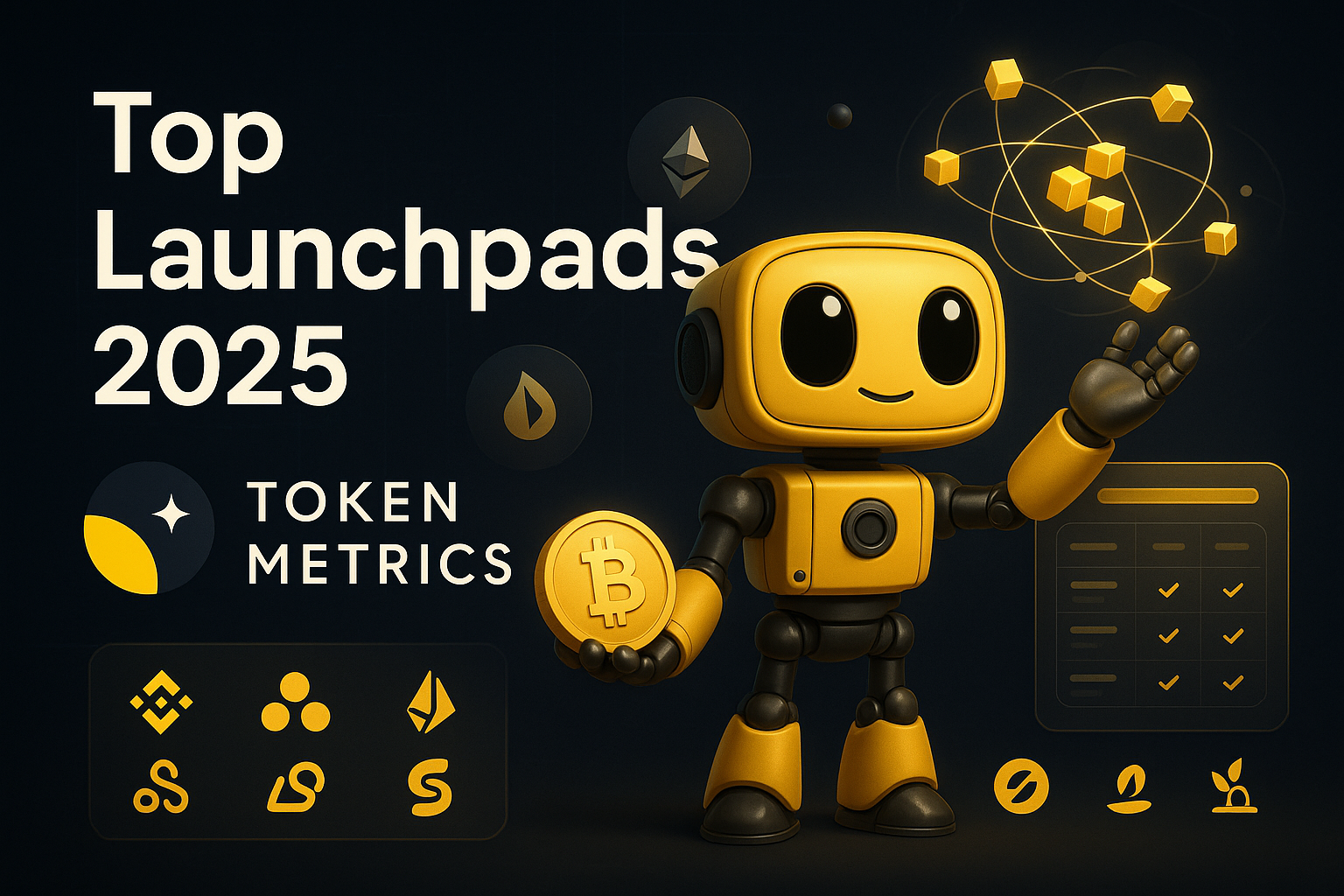
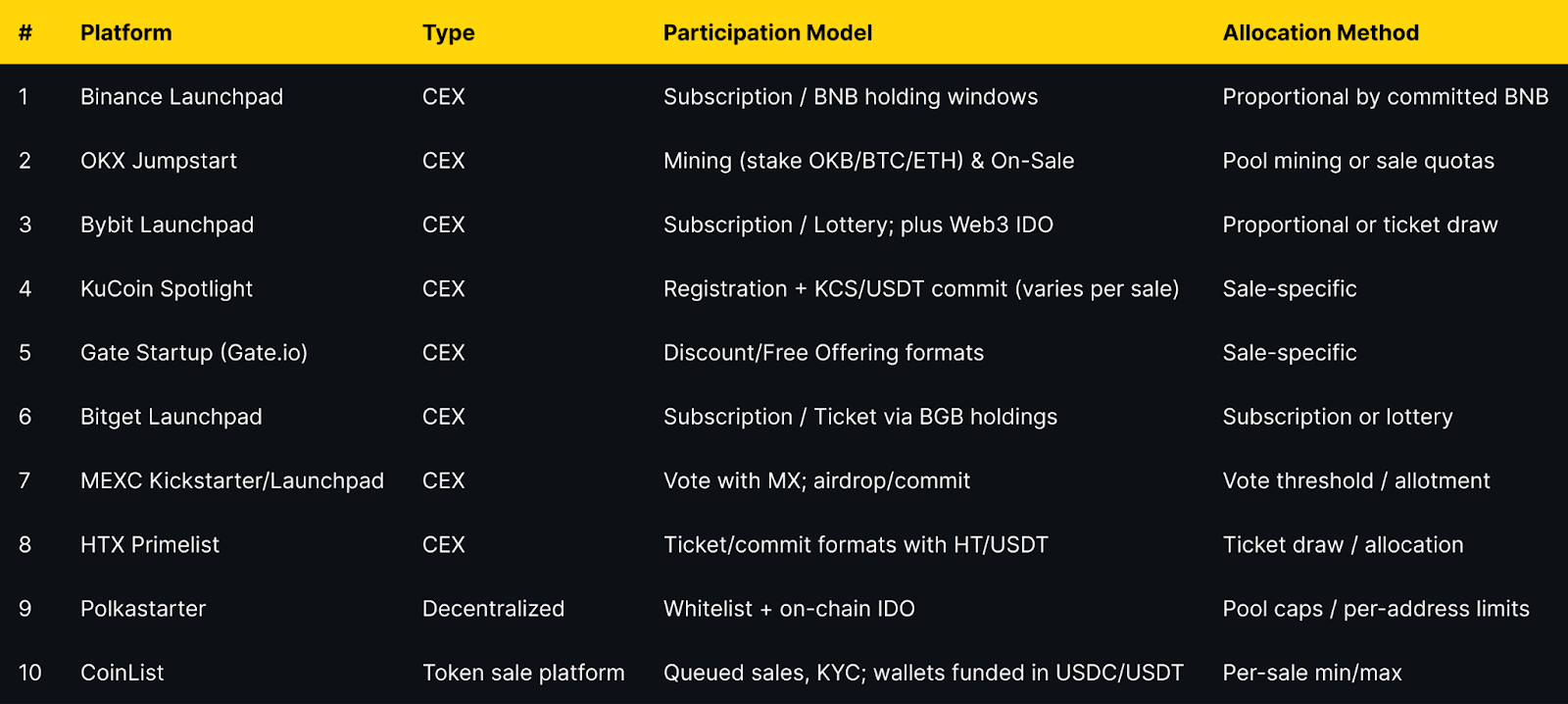
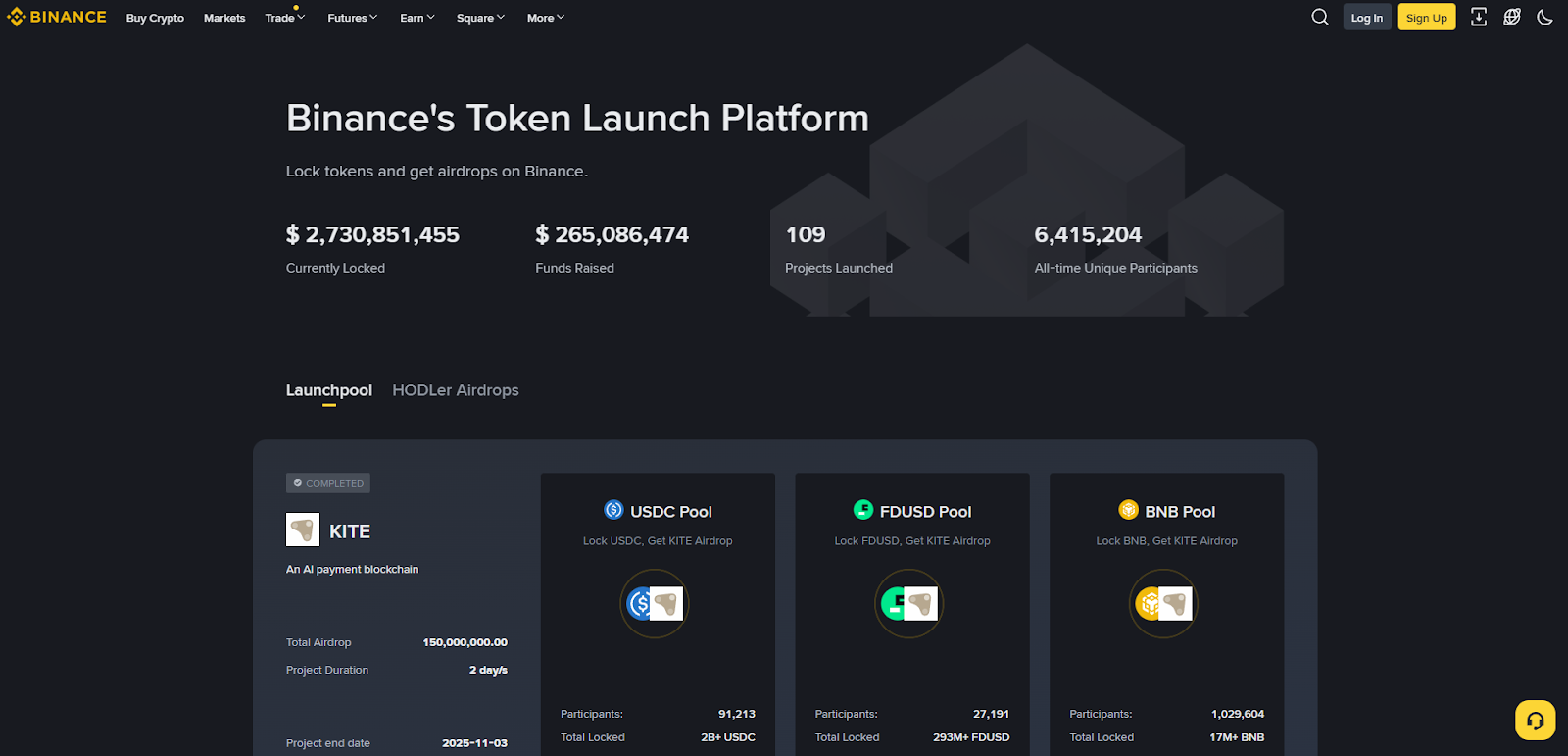
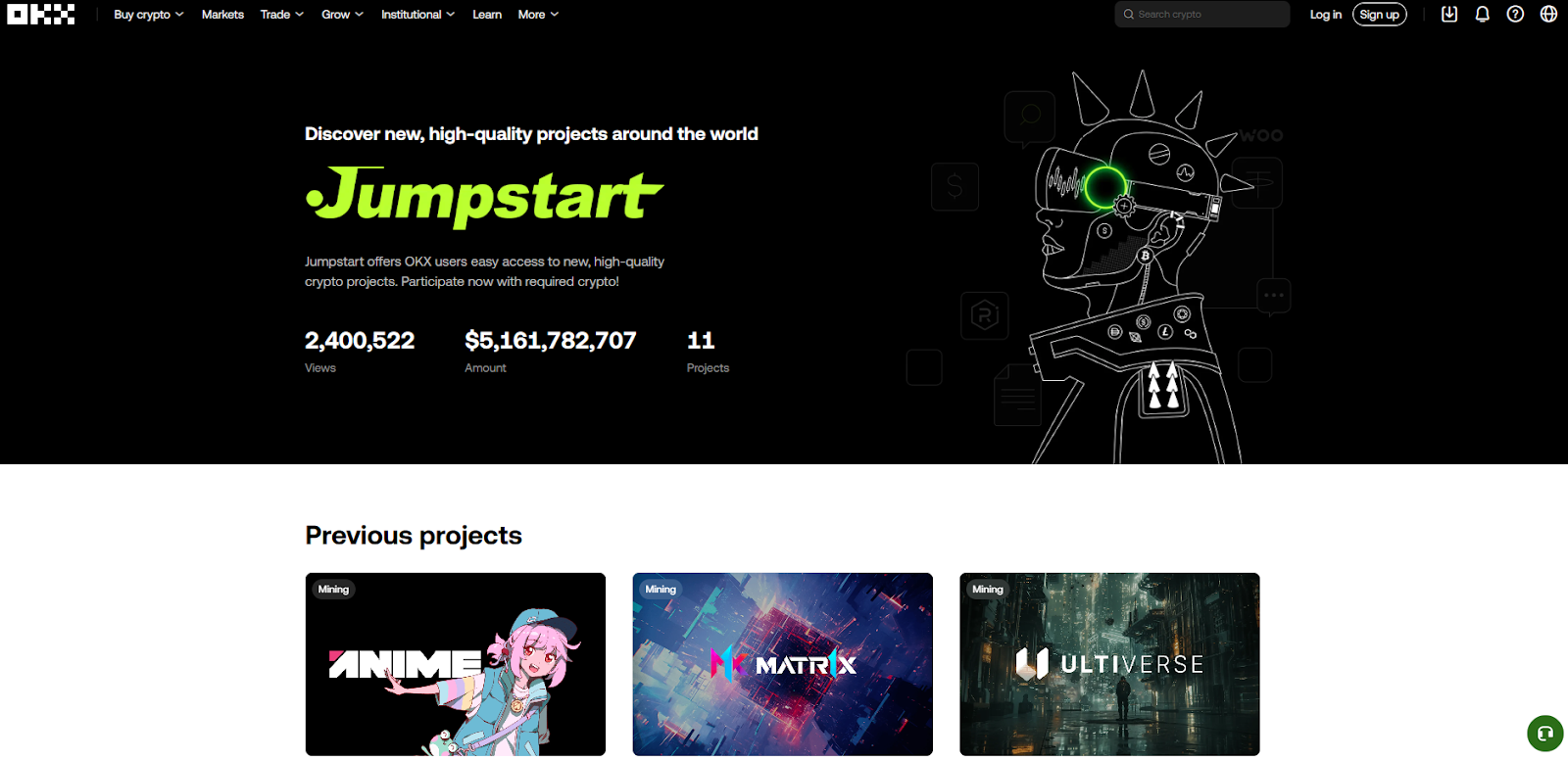
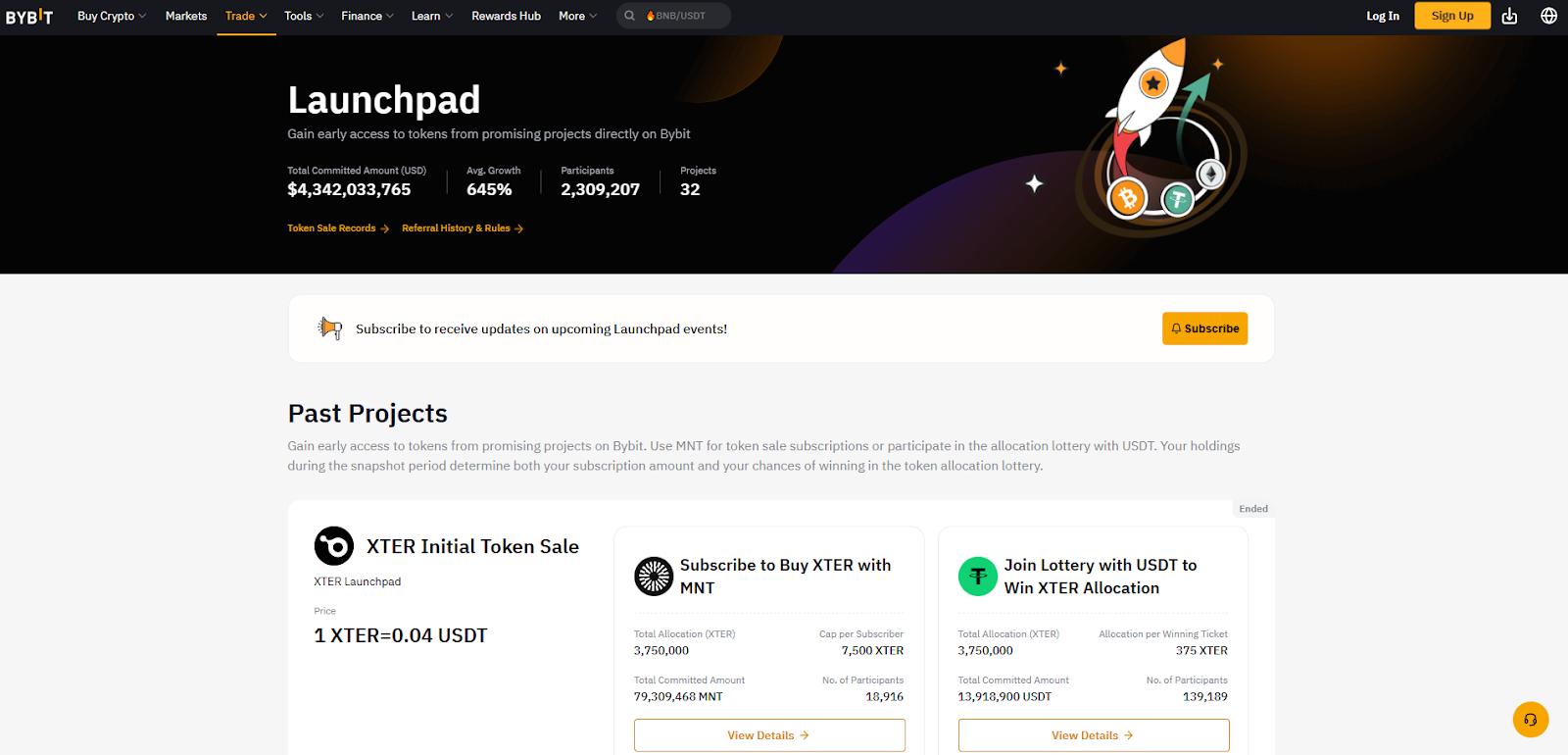
















.svg)




.png)